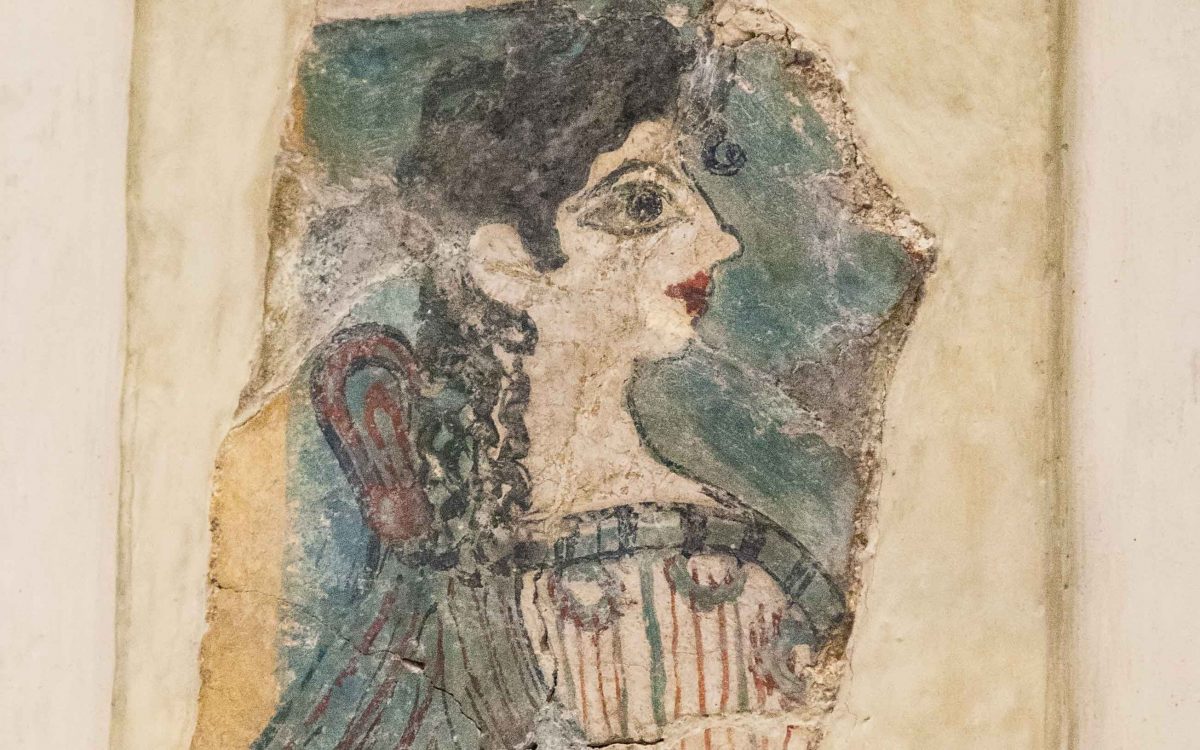This image of a young woman known as “La Parisienne” is one of the best known images from the Minoan Bronze Age. Currently on display in the Herakleion Archaeological Museum in Crete, it was part of a wall painting on the Sanctuary Hall of the Piano Nobile (Upper Floor or “Floor of the Noble”) at the palace of Knossos. The woman, depicted with fair skin, black curly hair, and wearing a elaborately woven blue and red striped dress, remains one of the few artistic representations of a Minoan person in color.
The fresco was first discovered by the British archaeologist Sir Arthur Evans during his excavations of the palace at the beginning of the 20th century. Soon afterwards it was shown to Edmond Pottier, an art historian, who likened her appearance to the contemporary women of Paris. It has been known as “La Parisienne” ever since.
Dated to the Final Palatial Period (c. 1450–1350/1300 BC), only La Parisienne’s head and upper body are preserved. Tied to the back of her dress is a “sacred knot,” as Evans called it – a loop of long cloth at the nape of the neck. The knot may indicate that the woman was a holy person, perhaps a priestess.
La Parisienne was painted using the buon fresco (“true fresh”) technique on wet plaster, and was part of a two tiered scene featuring pairs of men and women in profile sitting and standing, and holding up drinking vessels. The color and vibrancy of the scene, perhaps depicting a palace feast, is testament to the skill of Minoan fresco painters.












